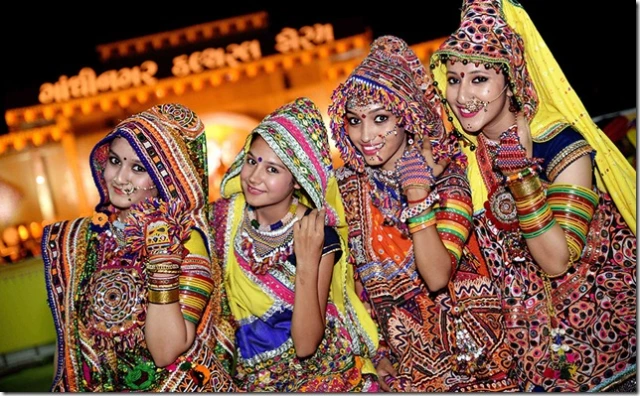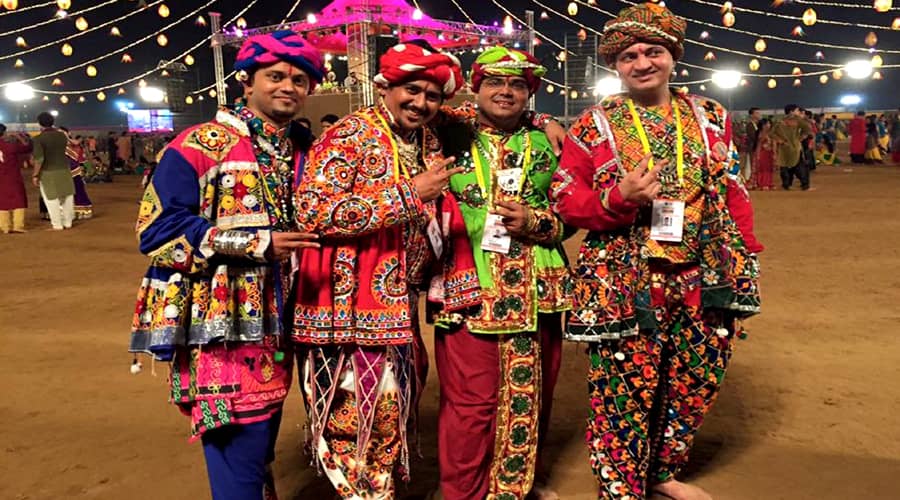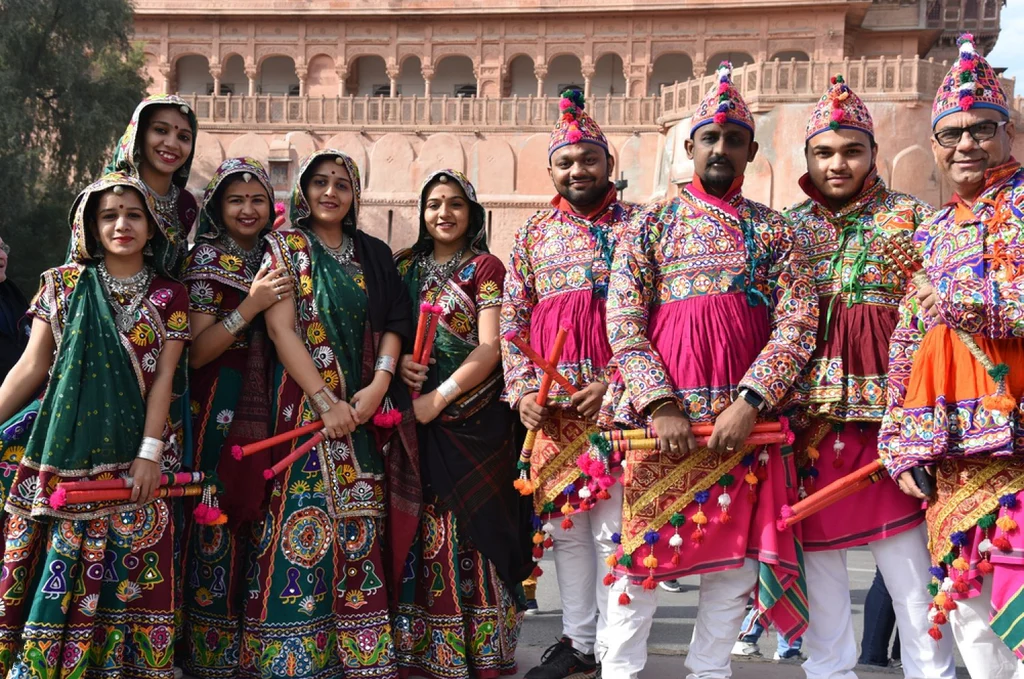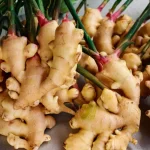Gujarat, the land of diversity and vibrant culture, is known for its rich heritage, which the people proudly preserve through various forms. Whether it’s food, performances, or attire, Gujarat’s deep-rooted tradition shines through in every aspect. The traditional dress of Gujarat, in particular, serves as a stunning reminder of the state’s cultural richness and the skillful craftsmanship that defines it. With a variety of intricate designs, colors, and patterns, the traditional attire of Gujarat reflects the vibrant life of its people. But what exactly do Gujaratis wear to express this cultural diversity? Let’s explore the traditional dress of Gujarat for both men and women.
Gujarat Women’s Traditional Dress

Chaniya Choli
One of the most beloved and iconic outfits in Gujarat is the Chaniya Choli. This beautiful three-piece ensemble comprises the Chaniya (a flared skirt), a Choli (blouse), and a Dupatta (scarf). The Chaniya is often richly decorated with mirror work, intricate embroidery, and bright, colorful motifs, which are pleated and tied around the waist. The Choli, tightly fitted to the torso, showcases exceptional craftsmanship, often featuring beadwork, shells, and threadwork. The Dupatta adds elegance to the outfit, draped gracefully over the shoulder or head, completing the ensemble with a traditional touch.
Ghagra
Similar to the Chaniya, the Ghagra is a long skirt, but unlike the Chaniya, it does not have pleats. The Ghagra is worn with a Choli and Dupatta and is preferred for its comfort and ease of movement. Often adorned with mirror work, Bandhani (tie-dye) designs, and fine embroidery, the Ghagra offers both beauty and practicality, making it a favored choice for everyday wear and special occasions alike.
Bandhani
Bandhani, also known as Bandhej, is a traditional tie-dye technique that originates from Gujarat and is highly cherished by its people. The fabric is tied into small knots before dyeing, creating intricate and colorful patterns. Bandhani sarees, dupattas, and dresses are highly valued for their unique designs and vibrant hues, making them a crucial element of Gujarat’s cultural identity.
Saree
While sarees are not exclusive to Gujarat, they hold a special place in the traditional dress of Gujarat. Gujarati sarees are renowned for their bright colors, detailed embroidery, and beautiful borders. The Pallu (the free end of the saree) is often elaborately decorated with mirror work or embroidery, adding a touch of grandeur to the outfit. Sarees in Gujarat embody both elegance and tradition, making them a popular choice for women during festivals and celebrations.
Gujarat Men’s Traditional Dress

Dhoti
For men, the Dhoti is a quintessential traditional outfit. It is a rectangular piece of cloth that is wrapped around the waist and thighs. Usually paired with a Kurta (a loose-fitting tunic) or a Koti (a traditional jacket), the Dhoti is available in different colors and fabrics. White Dhotis are commonly worn for formal events and religious ceremonies, symbolizing simplicity and purity.
Kurta-Pajama
The Kurta-Pajama is a classic, timeless outfit favored by Gujarati men. The Kurta, a long tunic, is usually worn with Pajama, a pair of loose trousers. This outfit is widely appreciated for its comfort, versatility, and simplicity, making it suitable for both casual and formal occasions. It also exudes a quiet elegance, which makes it a staple in every Gujarati man’s wardrobe.
Kedia
The Kedia is a traditional shirt unique to Gujarat, especially popular during festivals and celebrations. It features a loose fit and is adorned with intricate embroidery. Usually worn with a Dhoti or Pajama, the Kedia reflects the rich heritage of Gujarat through its detailed craftsmanship. This outfit is commonly seen during cultural events, wedding ceremonies, and festive gatherings, where men proudly showcase their vibrant and colorful attire.
Safa
The Safa, a traditional headgear, is worn by Gujarati men on special occasions such as weddings or festivals. Made from brightly colored fabrics and often embellished with beads and mirrors, the Safa adds a touch of regal elegance to the men’s traditional attire. It symbolizes honor and respect, completing the overall ensemble with a royal flair.
Conclusion
The traditional dress of Gujarat is a true reflection of its vibrant and diverse culture. From the colorful and elaborately designed Chaniya Choli worn by women to the timeless Dhoti-Kurta ensemble donned by men, the clothing of Gujarat represents centuries of tradition and craftsmanship. The intricate designs and vivid colors of these outfits showcase the cultural identity of Gujarat and its people. Whether it’s the festival-ready Kedia or the beautifully dyed Bandhani fabrics, Gujarat’s traditional attire continues to be a symbol of pride for its people. The rich heritage embodied in the traditional dress of Gujarat makes it a must-see for anyone looking to experience the cultural splendor of this extraordinary state.


